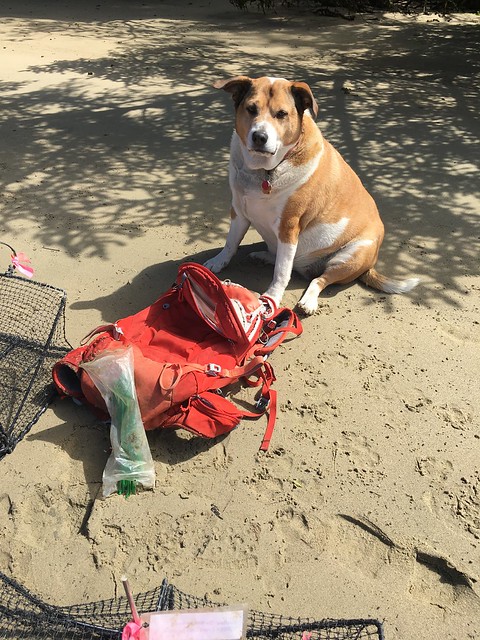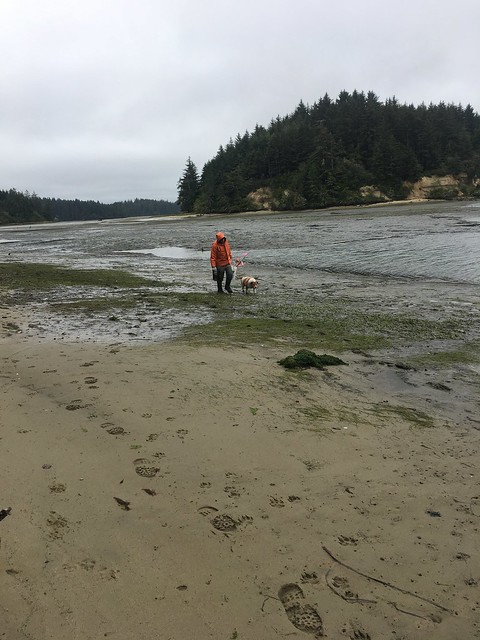Pressure.
It’s what pushes us to perform our best, it’s sometimes hard to handle….and it’s also what created Crater Lake.
This week was a pretty routine work week- I spent the first half megacoring with the SEACOR team and the latter half in the office doing background research for our oyster survey, counting shrimp, and conducting surveys of local recreational crabbers/clammers. Pretty low pressure as far as work is concerned.
However, this week we received information on our final symposium taking place the 9th week of the program, for which we have to prepare a 5 minute talk and poster to present to the Sea Grant audience. The due dates for when these final products have to be submitted are fast approaching. Intro pressure. I have done enough public speaking to feel pretty comfortable giving these sorts of presentations. But in such a short time frame, trying to relay across enough information to draw an audience seems a difficult task. I’ve also never created a professional poster before, and trying to get it done in the midst of what will almost surely be my most time-consuming work week to date (with the native oyster survey happening Monday- Friday with just Joe and myself hitting 60+ site by foot, boat, etc), just does not sound appealing. That being said, I will change out of my grumpy pants and rise to the occasion to put together something I will be able to show off with some dignity at the final symposium.
Beyond the pressure of the program, I’m feeling external pressure as well. With only a few weeks left in my internship, I’ll be back home before I know it. The pressure of finding a job to come back to is intensifying. I have always been a person with forethought, planning my next move to get me to my next goal. I remember the relief I felt after being accepted into this program, because it meant I had a next step after graduating college. But I’m at a dead end. This time (as of now) I don’t have a next step waiting for me when I get done. And I don’t like that, not one bit. My long-term plan is to go back to school in Fall ’18 for my master’s, but find a full time position in the mean time to save money for school and make a dent in my existing loans. But finding a full time position in anything even remotely close to my field is proving difficult. Especially in my home state of NY. I’ve been away from home for 4 years and the thought of being back in Rochester for awhile after graduating was comforting. But if I can’t find work I fear I’ll feel paralyzed. Like I’m not living up to the expectations I had for my life beyond graduation.
I have been putting out applications, editing my LinkedIn profile, contacting old mentors- everything they tell you to do when looking for a job. So far, I’ve only gotten rejections or no response at all. Dealing with the rejection has been a bit of a struggle for me, mainly just because it’s often blamed on my lack of work experience. Well how am I supposed to get the experience if no one will hire me?! (I realize this is an issue 99% of recent grads have all been through/ relate to, but this is my blog so let me have my pity party moment, thanks). I kind of hoped having a degree would put an end to my interning days/ working for minimum wage, but I don’t think I’ll be in a big girl job making the “big” bucks anytime soon. I’m just going to keep doing what I’m doing and hope something turns up (if you’re reading this and you have a job opening- hire me? :) or if you have info on any positions please send it my way!).
Now on to hydrothermal pressure. Ah yes, the fascinating natural disaster that gave rise to beautiful Crater Lake. 7,700 years ago the catastrophic eruption of Mount Mazama led the mountaintop to collapse in on itself and form a massive bowl-like depression called a caldera. The caldera, almost 4000 ft deep, then filled with water from rainfall and snow events, to form a lake 1943 ft deep, the deepest in the United States.
The geologic history of the lake is fascinating but its natural beauty is what’ll take your breath away. It was my first time being in a national park, and even with such a high volume of visitors the park was pristine, with the natural features so well preserved, and human presence undetected in a lot of areas. I was in awe all day, impressed by the natural structures and national park service alike. We took a beautiful hike- that was classified as strenuous but totally doable, and not super crowded- up Garfield Peak, which took us through wildflowers, hordes of butterflies, a bit of snow, and followed the edge of the caldera almost the whole way.
Later on we took another hike, this time down to the water at the only access point to the lake. It was a sunny, warm day and I jumped right in without hesitation. After a few sharp breaths and the initial shock of the cold I actually adjusted to the temperature pretty quickly. Julia joined me and we both took our time swimming (a deviation from most people who get in, can’t handle the cold and get the hell out) and taking in the views above and below us. I’m not a religious person, but being in that gorgeous blue water was a spiritual experience. So was sitting in a rocking chair in the back of the luxurious lodge with a drink in hand, looking out over the park while the sun sank lower in the sky. It was a perfect day.
Till next time,
Katie
































